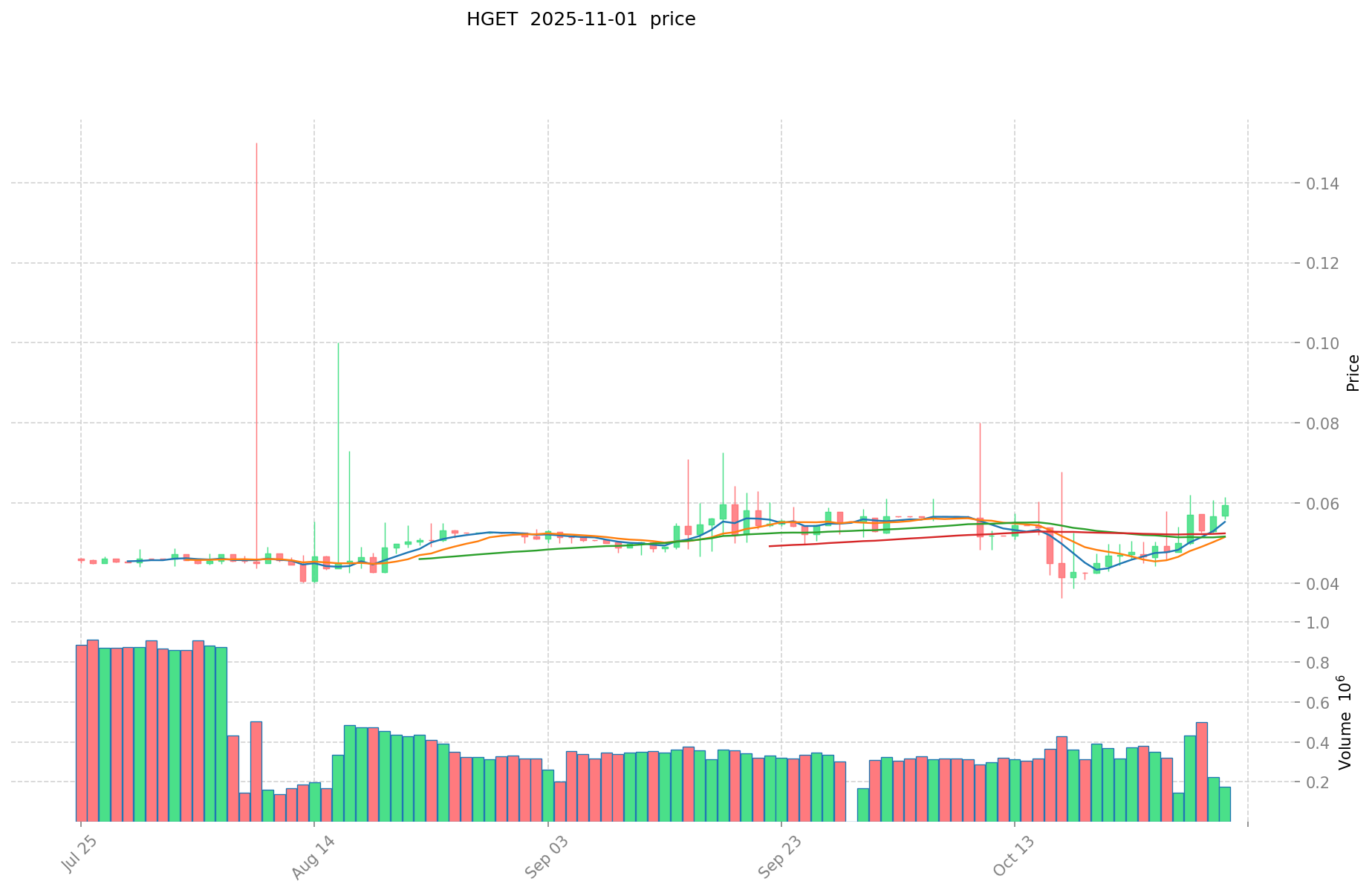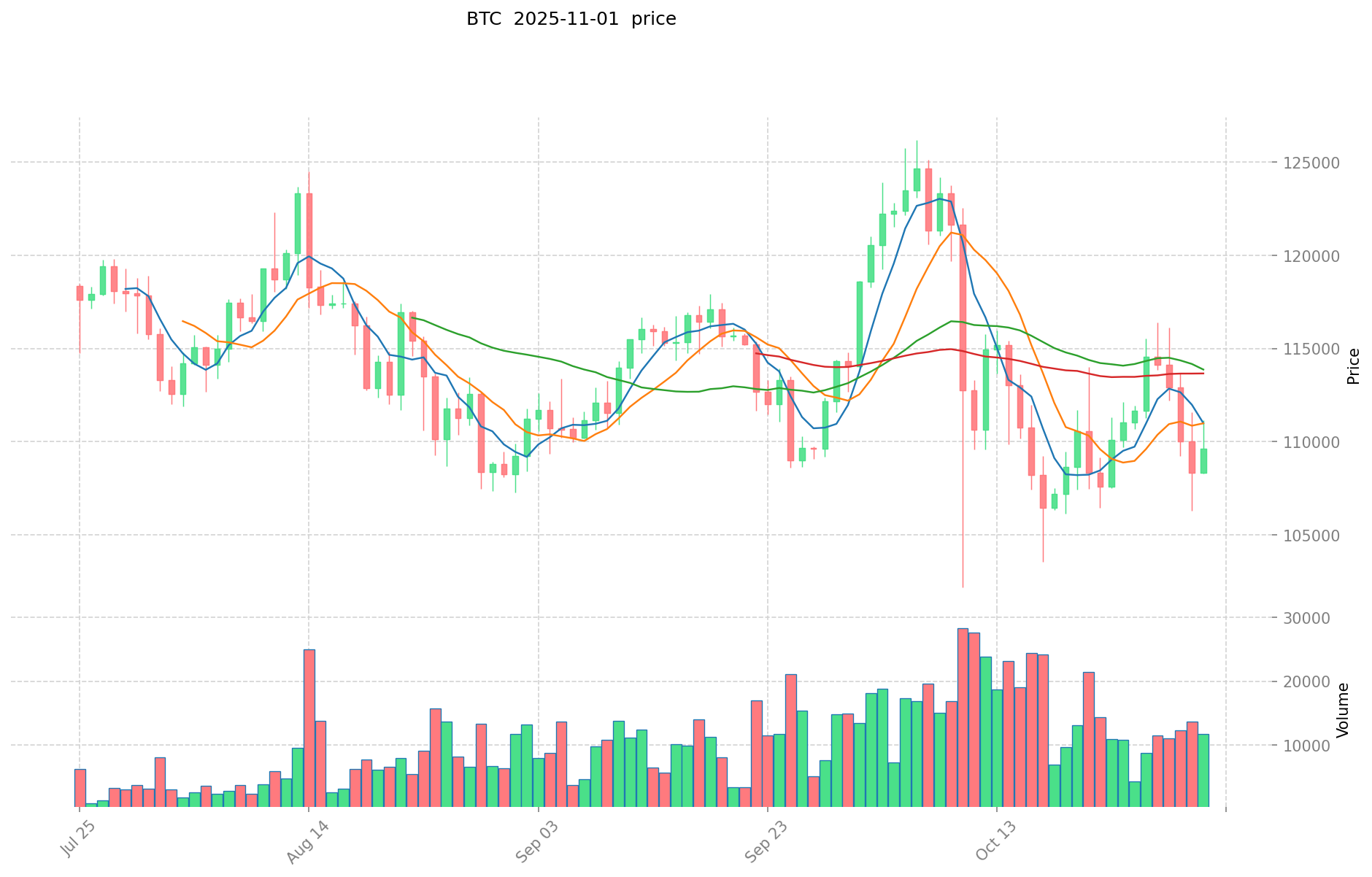HGET vs BTC: Which Cryptocurrency Offers Better Long-Term Growth Potential?
Introduction: HGET vs BTC Investment Comparison
In the cryptocurrency market, Hedget vs Bitcoin comparison is a topic investors cannot ignore. The two differ significantly in market cap ranking, use cases, and price performance, representing different positions in the crypto asset landscape.
Hedget (HGET): Launched in 2020, it has gained market recognition for its decentralized options trading protocol.
Bitcoin (BTC): Since its inception in 2008, it has been hailed as "digital gold" and remains one of the most traded and highest market cap cryptocurrencies globally.
This article will comprehensively analyze the investment value comparison between HGET and BTC, focusing on historical price trends, supply mechanisms, institutional adoption, technological ecosystems, and future predictions, attempting to answer the question investors care about most:
"Which is the better buy right now?"
I. Price History Comparison and Current Market Status
HGET (Hedget) and BTC (Bitcoin) Historical Price Trends
- 2020: HGET reached its all-time high of $15.44 shortly after launch, likely due to initial market enthusiasm.
- 2021: BTC hit a record high of $68,790 in November, driven by widespread institutional adoption and mainstream acceptance.
- Comparative analysis: During the 2022 bear market, HGET dropped from its peak to a low of $0.03825506, while BTC showed more resilience, falling to around $15,000 but maintaining a higher market capitalization.
Current Market Situation (2025-11-02)
- HGET current price: $0.05764
- BTC current price: $110,300.9
- 24-hour trading volume: $10,184.77 (HGET) vs $576,150,044.38 (BTC)
- Market Sentiment Index (Fear & Greed Index): 33 (Fear)
Click to view real-time prices:
- View HGET current price Market Price
- View BTC current price Market Price


Bitcoin Investment Valuation Report 2025
I. Key Factors Influencing Bitcoin Investment Value
Institutional Adoption
- 401(k) Integration: Trump administration's executive order has opened Bitcoin investment to 401(k) retirement accounts, creating a potential channel to an $8.9 trillion capital pool. Even a conservative 1% allocation would represent $89 billion—approximately 4% of Bitcoin's current market cap.
- ETF Growth: Institutional investors continue to accumulate through ETFs, with current holdings reaching 1.3 million BTC. Forbes predicts more spot cryptocurrency ETFs in 2025, including for mainstream tokens like Solana.
- Corporate Treasury Adoption: Large institutions are making high-value transactions, shifting Bitcoin's network from "small-value high-frequency" to "high-value low-frequency" transaction patterns.
Regulatory Environment
- Positive Regulatory Developments: The improving regulatory clarity is unlocking institutional participation and reducing market uncertainty.
- Stablecoin Regulations: According to Bitwise, stablecoin regulations will inject significant capital into the market.
- Trump Administration Impact: The incoming administration's relatively friendly attitude toward cryptocurrencies is expected to attract more investors.
Macroeconomic Factors
- Global Liquidity Expansion: Major economies' M2 money supply has exceeded $90 trillion, reaching an all-time high. Historically, M2 growth rates and Bitcoin prices show similar directional patterns.
- De-dollarization Trend: Political uncertainties and a weakening dollar are driving central banks to seek alternatives to USD reserves, potentially benefiting Bitcoin.
- Reserve Asset Potential: Deutsche Bank suggests Bitcoin could become a core reserve asset for nations by 2030, with three main factors driving this trend.
II. Market Analysis and Price Projections
Price Predictions for 2025
- VanEck Forecast: Bitcoin price may reach its first peak of $180,000 in Q1 2025.
- Technical Analysis: Projections suggest Bitcoin could break the $200,000 threshold, establishing itself as "digital gold."
- On-Chain Indicators: While showing some overheating signals (MVRV-Z at 2.49), major downside risk appears limited. Metrics like aSOPR (1.019) and NUPL (0.558) remain in stable zones, indicating overall market health.
Network Fundamentals
- Transaction Patterns: Daily transaction count decreased 41% from 660,000 in October 2024 to 388,000 in March 2025, but average transaction value increased.
- Network Transformation: Bitcoin's network is undergoing a restructuring around large investors, with institutions like MicroStrategy making increasingly high-value transactions.
- User Activity: Despite price appreciation, transaction counts and active user numbers have not fully recovered, showing unbalanced growth.
III. Investment Opportunities in the Crypto IPO Landscape
The "Crypto IPO Year"
- Bitwise Prediction: 2025 will be the "Year of Crypto IPOs," with at least five billion-dollar crypto companies expected to go public in the US.
- Potential IPO Candidates: Circle (stablecoin issuer), Anchorage Digital ("crypto bank"), Chainalysis (blockchain analytics firm), and Kraken (exchange).
- Market Drivers: Stablecoin regulations and the crypto-friendly Trump administration are expected to attract significant investment, supporting successful crypto IPOs.
IV. Risks and Considerations
Market Psychology Factors
- Sentiment-Driven Volatility: Bitcoin price movements are heavily influenced by market sentiment, speculation, and reactions to news and trends.
- Fear Factors: Regulatory crackdowns, large sell-offs by "whales," and social media amplification can trigger panic selling.
- FOMO Effects: Fear of missing out can drive prices to unsustainable levels before corrections.
Technical and Supply-Demand Dynamics
- Limited Supply: Bitcoin's capped supply of 21 million creates scarcity as demand increases, especially during bull markets.
- Technical Vulnerabilities: Major hacks, network congestion, or security issues could erode investor confidence and impact prices.
- Mining Dynamics: Changes in mining difficulty and rewards can affect supply-demand balance.
III. 2025-2030 Price Prediction: HGET vs BTC
Short-term Prediction (2025)
- HGET: Conservative $0.0357368 - $0.05764 | Optimistic $0.05764 - $0.0610984
- BTC: Conservative $67,299.531 - $110,327.1 | Optimistic $110,327.1 - $133,495.791
Mid-term Prediction (2027)
- HGET may enter a growth phase, with expected prices ranging from $0.04760222456 to $0.06451354118
- BTC may enter a bullish market, with expected prices ranging from $118,260.197707275 to $184,866.5159562
- Key drivers: Institutional fund inflows, ETF, ecosystem development
Long-term Prediction (2030)
- HGET: Base scenario $0.040084343696837 - $0.075630837163843 | Optimistic scenario $0.075630837163843 - $0.108152097144296
- BTC: Base scenario $187,790.8486878550269 - $213,398.69169074434875 | Optimistic scenario $213,398.69169074434875 - $315,830.06370230163615
Disclaimer
HGET:
| 年份 | 预测最高价 | 预测平均价格 | 预测最低价 | 涨跌幅 |
|---|---|---|---|---|
| 2025 | 0.0610984 | 0.05764 | 0.0357368 | 0 |
| 2026 | 0.065899812 | 0.0593692 | 0.051057512 | 3 |
| 2027 | 0.06451354118 | 0.062634506 | 0.04760222456 | 8 |
| 2028 | 0.0832819709029 | 0.06357402359 | 0.0476805176925 | 10 |
| 2029 | 0.077833677081237 | 0.07342799724645 | 0.064616637576876 | 27 |
| 2030 | 0.108152097144296 | 0.075630837163843 | 0.040084343696837 | 31 |
BTC:
| 年份 | 预测最高价 | 预测平均价格 | 预测最低价 | 涨跌幅 |
|---|---|---|---|---|
| 2025 | 133495.791 | 110327.1 | 67299.531 | 0 |
| 2026 | 149951.077965 | 121911.4455 | 97529.1564 | 10 |
| 2027 | 184866.5159562 | 135931.2617325 | 118260.197707275 | 23 |
| 2028 | 190874.6777247765 | 160398.88884435 | 110675.2333026015 | 45 |
| 2029 | 251160.6000969254475 | 175636.78328456325 | 156316.7371232612925 | 59 |
| 2030 | 315830.06370230163615 | 213398.69169074434875 | 187790.8486878550269 | 93 |
IV. Investment Strategy Comparison: HGET vs BTC
Long-term vs Short-term Investment Strategies
- HGET: Suitable for investors focusing on DeFi innovation and options trading potential
- BTC: Suitable for investors seeking stability, store of value, and potential hedge against inflation
Risk Management and Asset Allocation
- Conservative investors: HGET: 5% vs BTC: 95%
- Aggressive investors: HGET: 20% vs BTC: 80%
- Hedging tools: Stablecoin allocation, options, cross-currency portfolios
V. Potential Risk Comparison
Market Risks
- HGET: Higher volatility, lower liquidity, and susceptibility to DeFi market trends
- BTC: Susceptible to macroeconomic factors, regulatory news, and institutional sentiment
Technical Risks
- HGET: Scalability, network stability, smart contract vulnerabilities
- BTC: Mining centralization, potential security vulnerabilities
Regulatory Risks
- Global regulatory policies may have different impacts on both assets, with BTC potentially facing more scrutiny due to its higher profile
VI. Conclusion: Which Is the Better Buy?
📌 Investment Value Summary:
- HGET advantages: Niche market in decentralized options trading, potential for high growth in DeFi sector
- BTC advantages: Established market leader, institutional adoption, potential as a global reserve asset
✅ Investment Advice:
- Novice investors: Consider a small allocation to BTC as part of a diversified portfolio
- Experienced investors: Explore a balanced approach with a majority in BTC and a smaller allocation to HGET for higher risk-reward potential
- Institutional investors: Focus on BTC for its liquidity, regulatory clarity, and potential as a treasury reserve asset
⚠️ Risk Warning: The cryptocurrency market is highly volatile, and this article does not constitute investment advice. None
VII. FAQ
Q1: What are the key differences between HGET and BTC as investment options? A: HGET is a niche player in decentralized options trading with higher growth potential but also higher risk. BTC is the established market leader with greater institutional adoption and potential as a global reserve asset, offering more stability but potentially lower growth rates.
Q2: How do the price predictions for HGET and BTC compare for 2030? A: By 2030, HGET is predicted to reach between $0.040084343696837 and $0.108152097144296 in optimistic scenarios. BTC is projected to reach between $187,790.8486878550269 and $315,830.06370230163615 in optimistic scenarios.
Q3: What are the main risks associated with investing in HGET and BTC? A: HGET faces higher volatility, lower liquidity, and DeFi-specific risks. BTC is more susceptible to macroeconomic factors, regulatory news, and institutional sentiment. Both face technical and regulatory risks, though BTC may face more scrutiny due to its higher profile.
Q4: How might institutional adoption affect BTC's value in the coming years? A: Institutional adoption, including 401(k) integration, ETF growth, and corporate treasury adoption, is expected to significantly boost BTC's value. Even a conservative 1% allocation from 401(k) accounts could represent $89 billion, approximately 4% of Bitcoin's current market cap.
Q5: What factors could drive Bitcoin to become a core reserve asset for nations? A: Deutsche Bank suggests three main factors: 1) The continuing trend of de-dollarization, 2) Political uncertainties and a weakening dollar, and 3) Bitcoin's potential as a stable store of value. These factors could lead to Bitcoin becoming a core reserve asset for nations by 2030.
Q6: How should investors allocate their portfolios between HGET and BTC? A: Conservative investors might consider allocating 5% to HGET and 95% to BTC, while more aggressive investors could allocate 20% to HGET and 80% to BTC. The exact allocation should depend on individual risk tolerance and investment goals.
Q7: What is the outlook for crypto IPOs in 2025? A: 2025 is predicted to be the "Year of Crypto IPOs," with at least five billion-dollar crypto companies expected to go public in the US. Potential IPO candidates include Circle, Anchorage Digital, Chainalysis, and Kraken. This trend could bring significant investment into the crypto sector.
Share
Content